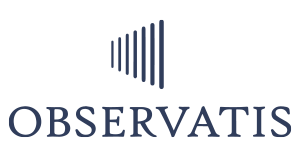Succession shouldn’t start with an org chart—it should start with insight.
Succession isn’t about replacement—it’s about readiness.
Succession planning often becomes a reactive scramble when a key leader exits. This approach leaves organizations vulnerable, with talent decisions made under pressure. In today’s dynamic environment, proactive talent intelligence is essential. By integrating real-time data and analytics, organizations can identify and develop future leaders, ensuring seamless transitions and sustained performance.
It’s not about who’s next—it’s about who’s ready.
– Lack of Proactive Planning: Many organizations wait until a vacancy arises to consider succession, leading to hasty decisions.
– Overreliance on Tenure: Promotions are often based on tenure rather than potential or performance, which can overlook emerging leaders.
– Limited Data Utilization: Without leveraging talent analytics, organizations miss insights into employee readiness and development needs.
– Cultural Resistance: Some leaders resist succession planning due to fears of being replaced or losing control.
Let’s address it together
Observatis offers a comprehensive Talent Intelligence platform that transforms succession planning:
– Real-Time Talent Mapping: Visual dashboards display employee readiness levels, potential successors, and development pathways.
– Predictive Analytics: Machine learning models forecast turnover risks and identify high-potential employees.
– Customized Development Plans: Tailored growth plans align with organizational goals and individual aspirations.
– Bias Mitigation: Data-driven insights reduce reliance on subjective judgments, promoting equity in leadership development.
Why It Matters?
Effective succession planning ensures leadership continuity, minimizes disruptions, and maintains stakeholder confidence. By proactively identifying and developing future leaders, organizations can adapt to changes swiftly and maintain a competitive edge.


Emerging Scientific Insights
– Succession Evasion: Research highlights that some leaders avoid succession planning due to fears of being replaced, leading to talent suppression and organizational stagnation.
– Data-Driven Decisions: Studies emphasize the importance of integrating analytics into talent management to enhance decision-making and identify leadership potential effectively.
– Board Engagement: Boards are increasingly recognizing the need for active involvement in talent strategy and succession planning to ensure organizational resilience.
Pioneer Lighting the path
– NIH’s Executive Leadership Program: The NIH has implemented structured programs to prepare leaders for future roles, emphasizing the importance of proactive development.
– Harvard’s Board Recommendations: Harvard Law School advocates for boards to allocate dedicated time to discuss talent strategies and succession planning, highlighting its strategic importance.
Your Engagement Action Blueprint
- Assess Current Talent: Evaluate existing employees’ skills, performance, and potential.
- Identify Gaps: Determine areas where leadership development is needed.
- Implement Development Plans: Create tailored growth opportunities aligned with organizational goals.
- Leverage Analytics: Use data to monitor progress and adjust strategies as needed.
- Foster a Succession Culture: Encourage open discussions about career progression and leadership opportunities.
Industry Signals from recent research
Harvard Business Review (2023): Only 35% of organizations have a formal succession plan—yet 84% of CEOs say it’s a top priority.
NIH-PubMed Research (2022): Proactive succession planning improves employee retention by fostering psychological safety and career clarity.
Gartner (2023): Organizations using predictive talent analytics were 2.6× more likely to retain top leadership in times of change.
McKinsey (2023): High-performing organizations invest 40% more in internal leadership pipelines—and show 2x higher engagement in transition periods.
SHRM (2022): Transparent succession planning is directly linked to stronger DEI outcomes and internal mobility.
References & Credits
Harvard Business Review. Why Succession Planning Still Fails—and How to Fix It (2023)
NIH National Library of Medicine. Leadership Transitions and Organizational Health
Gartner Talent Research (2023). Succession + Predictive Workforce Strategy
McKinsey & Company. Building Leadership Pipelines for a Resilient Future
SHRM. Succession Planning: (2022)
How prepared are you for your next leadership transitions?
We bring clarity to succession planning—tracking readiness, mobility, and bench strength through real-time signals.
If you’d like to see how talent intelligence can support long-term growth, let’s talk.





Anonymous
Talent moves fast. We can’t afford reactive succession planning anymore.
Anonymous
Love the ‘who’s ready’ vs. ‘who’s next’ mindset
Anonymous
Interesting that Observatis connects succession with engagement. Makes total sense.
Anonymous
Identifying successors is easy. Preparing them—that’s the real challenge.